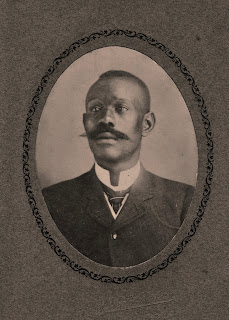 |
| Picture Unknown Courtesy of Monteral Latrice Harrell |
I became acquainted with the undocumented history of African American people in Tangipahoa and St. Helena Parishes through images collected for my new book entitled Images "Images of America" African Americans in Tangipahoa and St. Helena Parishes. The parish of Tangipahoa was formed in 1869 during Reconstruction. It was created by taking territory from St. Helena, St. Tammany, Livingston, and Washington Parishes. The name derives from the Tangipahoa Native American who lived in the area. The name Tangipahoa comes from an Acolaspissa word meaning "ear of corn' or "those who gather corn. Tangipahoa is the youngest of the Florida Parishes.
At the end of the Civil War, many former enslaved Africans remained in the parishes with their families. Virtually left without land and other resources that would help to sustain them, they were determined to start a new life. After four hundred years of slavery and hard work, they had to search for that new freedom with only the rags on their backs. They knew that road would be a very challenging road with many triumphs ahead. But they were determined to meet the many challenges in front of them. The only thing they owned where their skills. The very skilled they used to work for the former slavemasters, they used them to work for themselves.
The parish was created only six years after slavery was abolished in the United States. For the most part, many African American people who have lived in Tangipahoa Parish now were already living in the Florida Parishes. It's important to know when the parishes were created when you are historically researching or conducting genealogy research. Livington Parish was created in 1832, St. Helena Parish was created in 1810, and Washington Parish was created in 1819.
The history of many African American people living in Tangipahoa can be traced back to St. Helena Parish because it is the oldest parish of the four Louisiana Florida Parishes. Although some African Americans may trace their family origins back to East Feliciana Parish.
 |
| Dr. Kingsley B. Garrison Photo Credit: Antoinette Harrell |
I've traveled many back roads throughout St. Helena Parish in search for plantations. The Carter Plantation also known at the Carter House is a historic plantation in Livingston Parish. I haven't seen any plantations and cabins to tour in St. Helena. St. Helena plantation life is somewhat non-existent. My ancestors on my maternal side of my family history traced back to St. Helena Parish. Benjamin and Celica Bankston Richardson owned Carrie, my 4th great grandmother, and child Thomas. Although many of the plantation homes and cabins aren't there. You may be able to find your ancestors in the wills, successions, and probate records in the courthouse.
 |
| Nellie Berry and her sister Philicity Courtesy: Lillian Bates |
Robert "Free Bob" Vernon purchased thousands of acres of land for his family. He donated land for the church, school, and cemetery. Jim Temple also owned large tracts of land for him and his family. My great grandfather Robert Harrell and his son Alexander Harrell purchased land in 1888. A lot of African American families still live on the land that their ancestors purchased. The more I research about the undocumented people who made great contributions to these two Florida Parishes, the more I want to share.
In 2019, we are embarking upon Tangipahoa Parish sesquicentennial celebration. My ancestors had lived in Tangipahoa Parish for 150 years like so many families. We are proud of the contributions and should celebrate through a series of events that can help us commemorate our past and present. 150 years later, where are we? Can we empower the future by sharing our history?
In 2019, we are embarking upon Tangipahoa Parish sesquicentennial celebration. My ancestors had lived in Tangipahoa Parish for 150 years like so many families. We are proud of the contributions and should celebrate through a series of events that can help us commemorate our past and present. 150 years later, where are we? Can we empower the future by sharing our history?